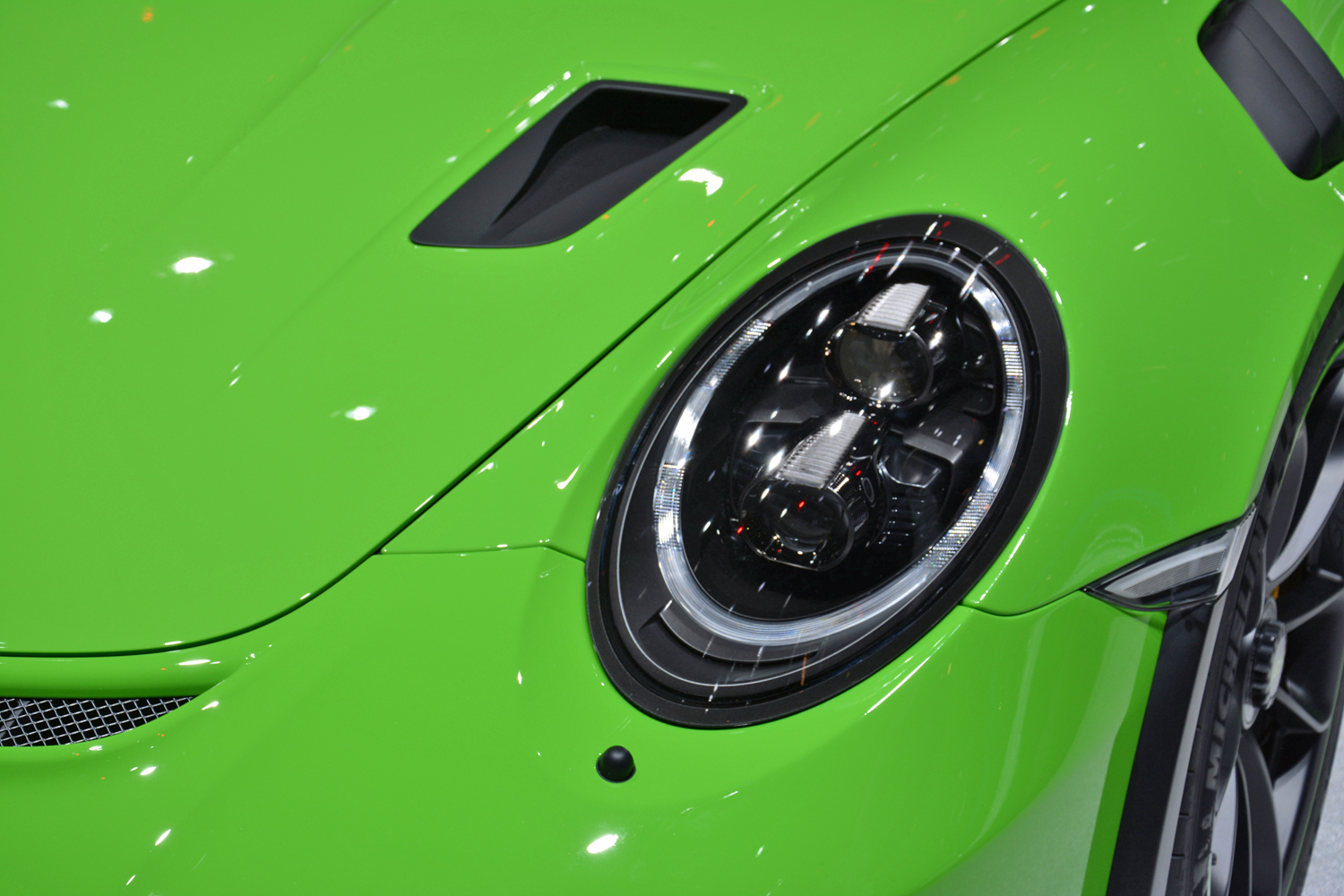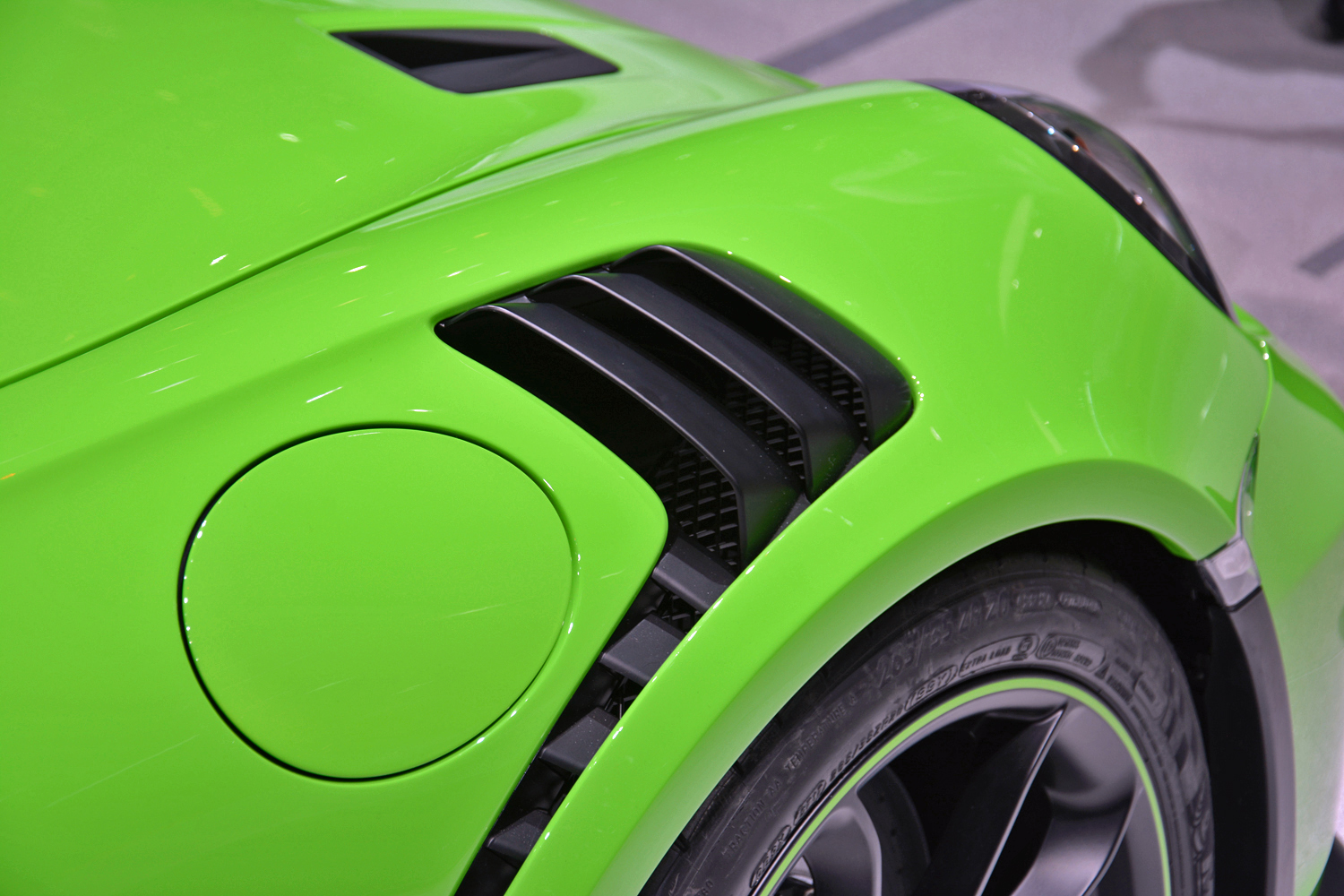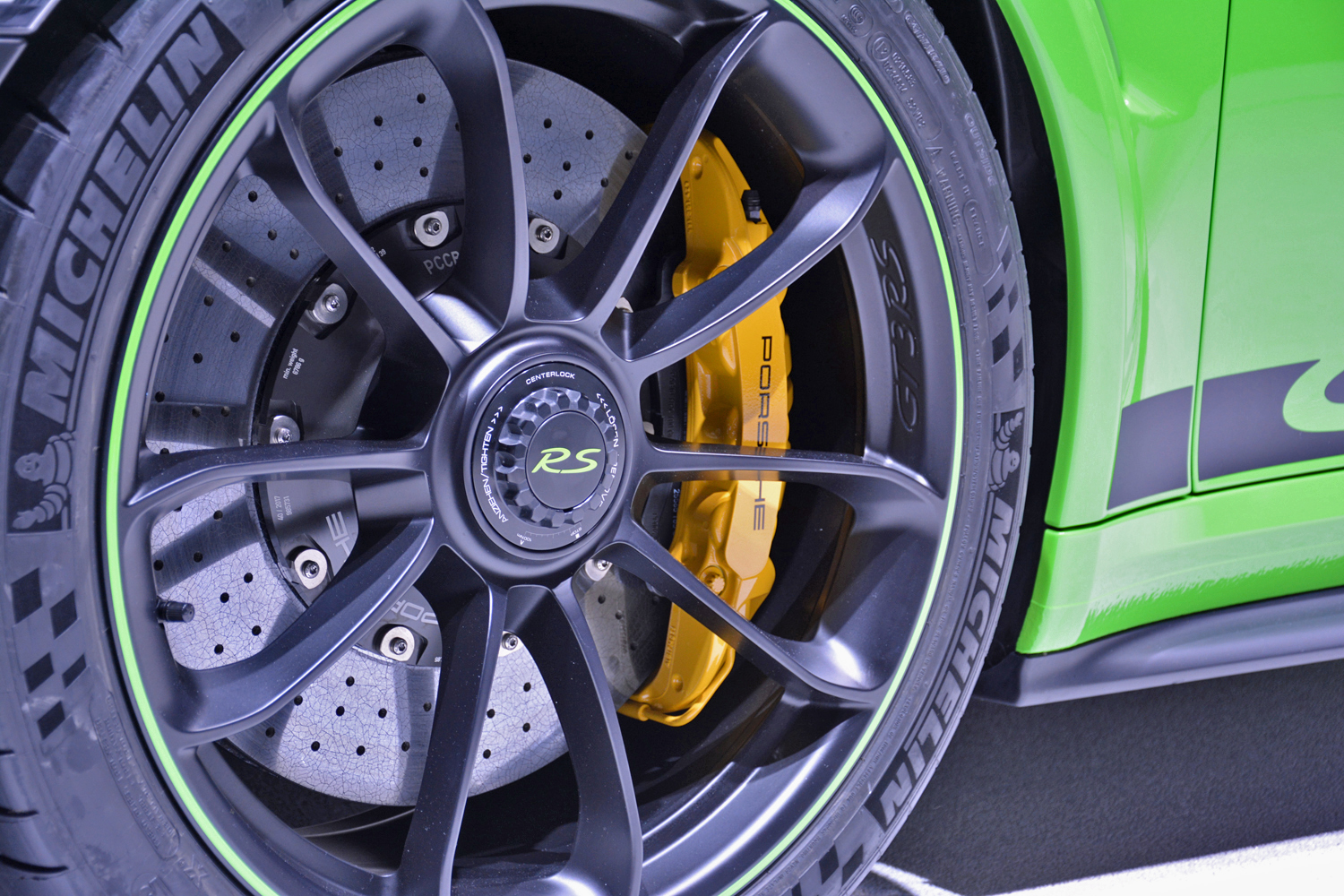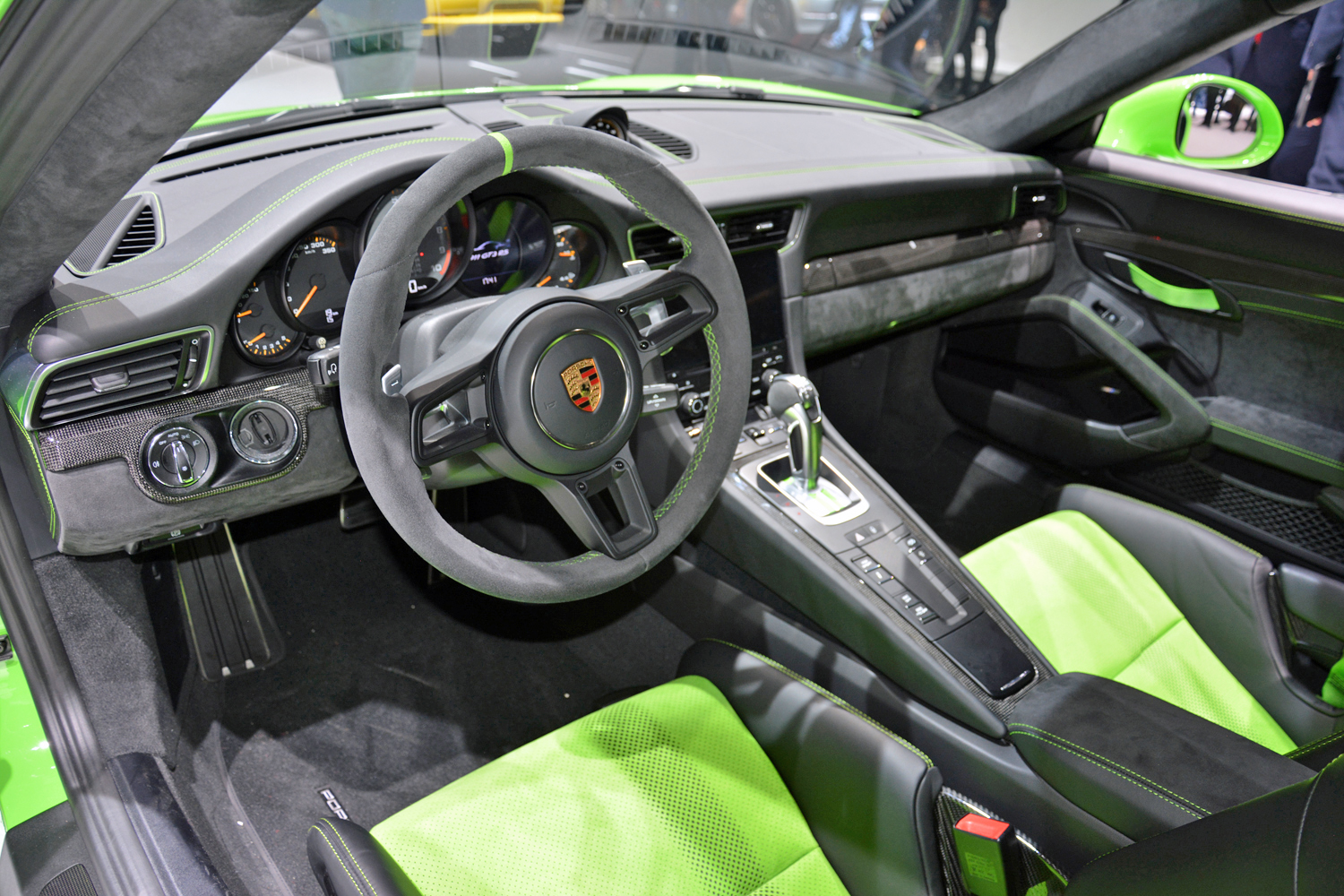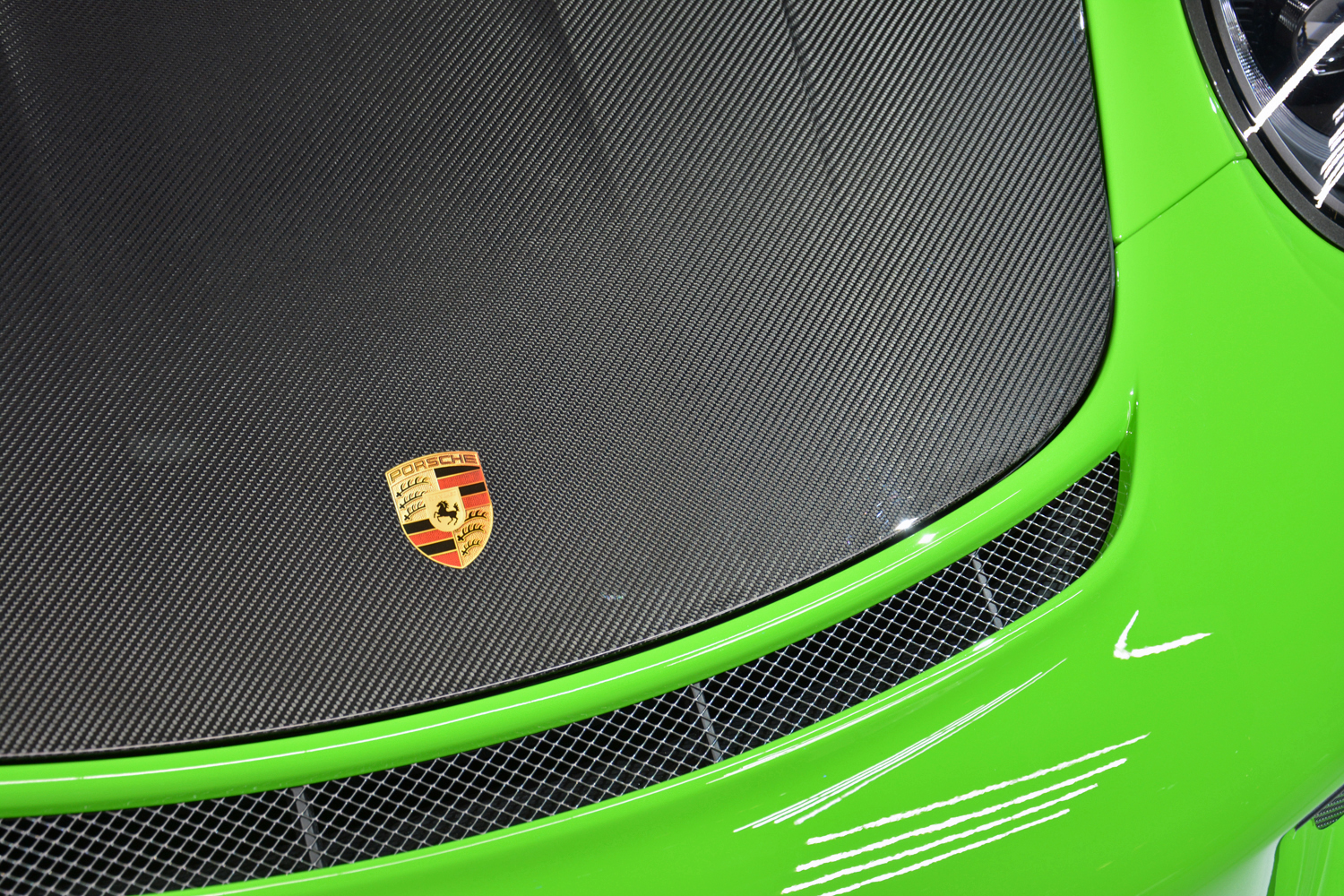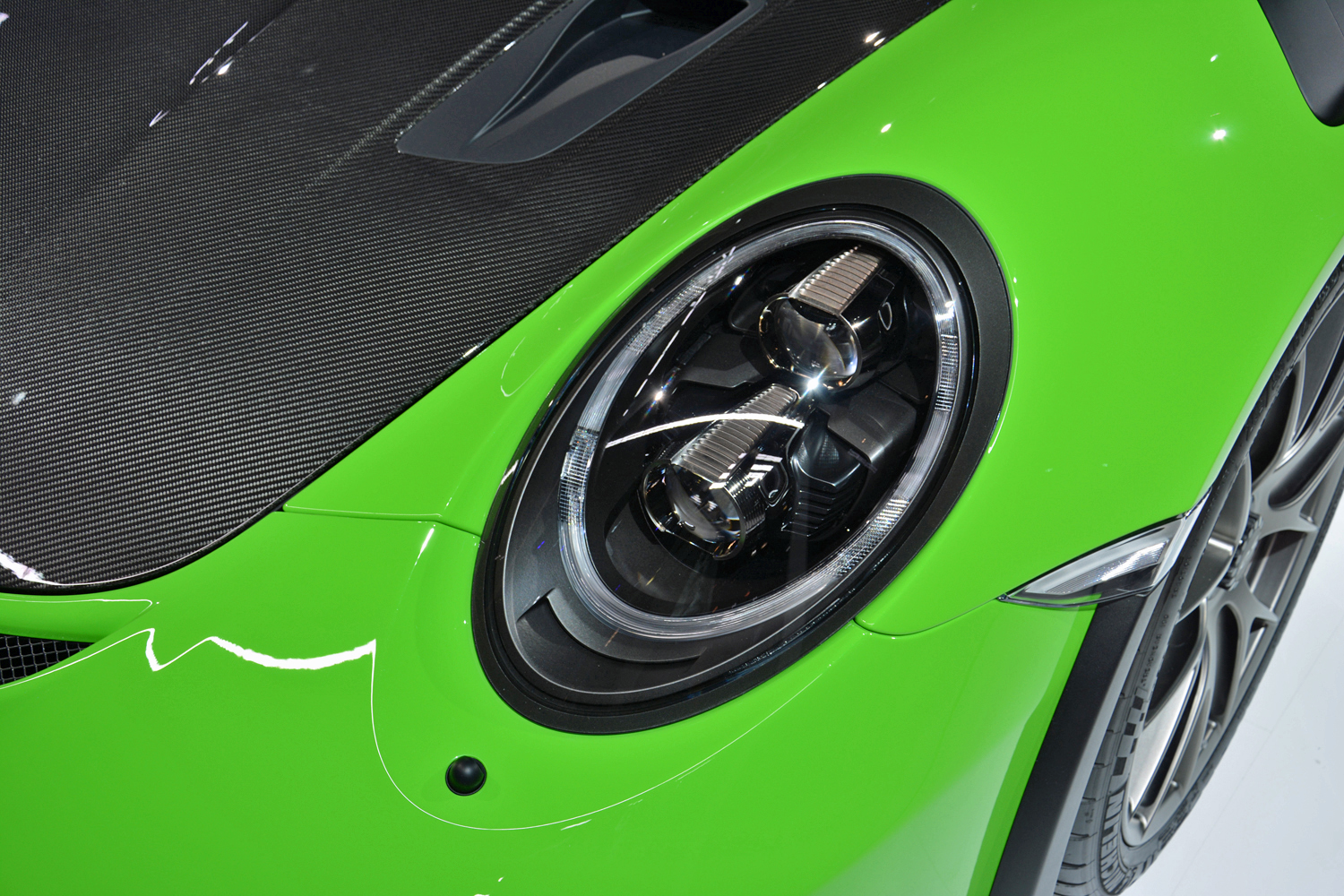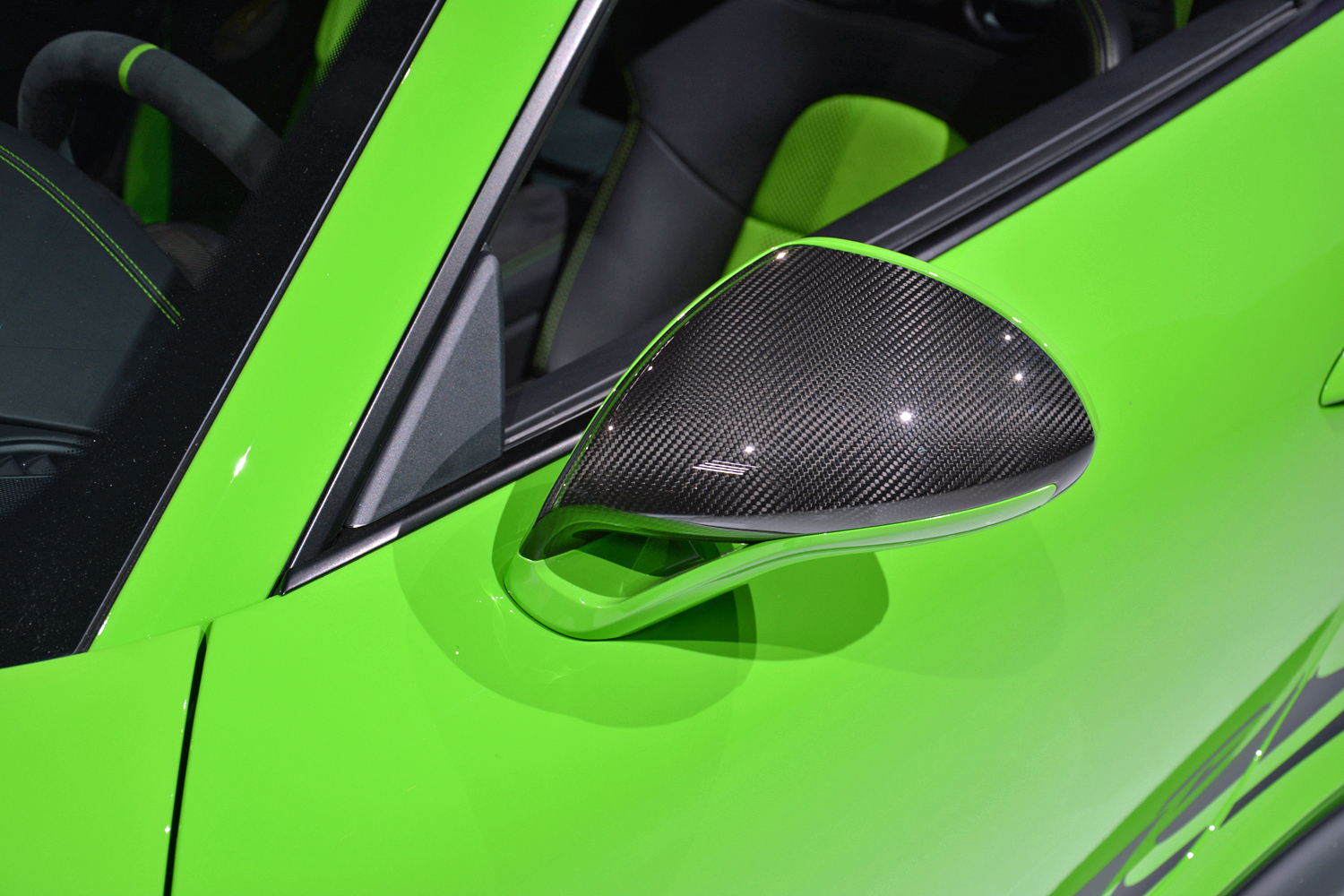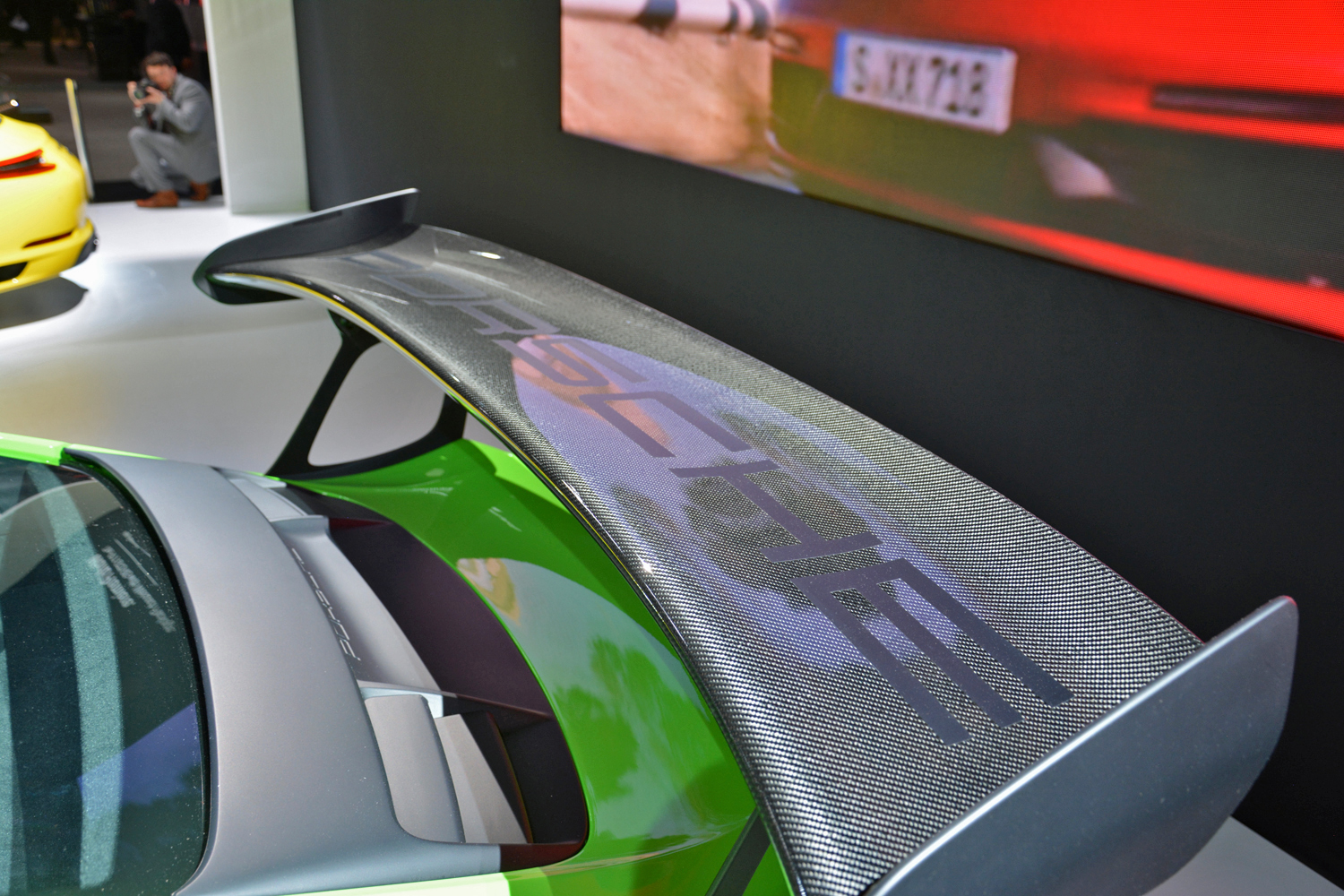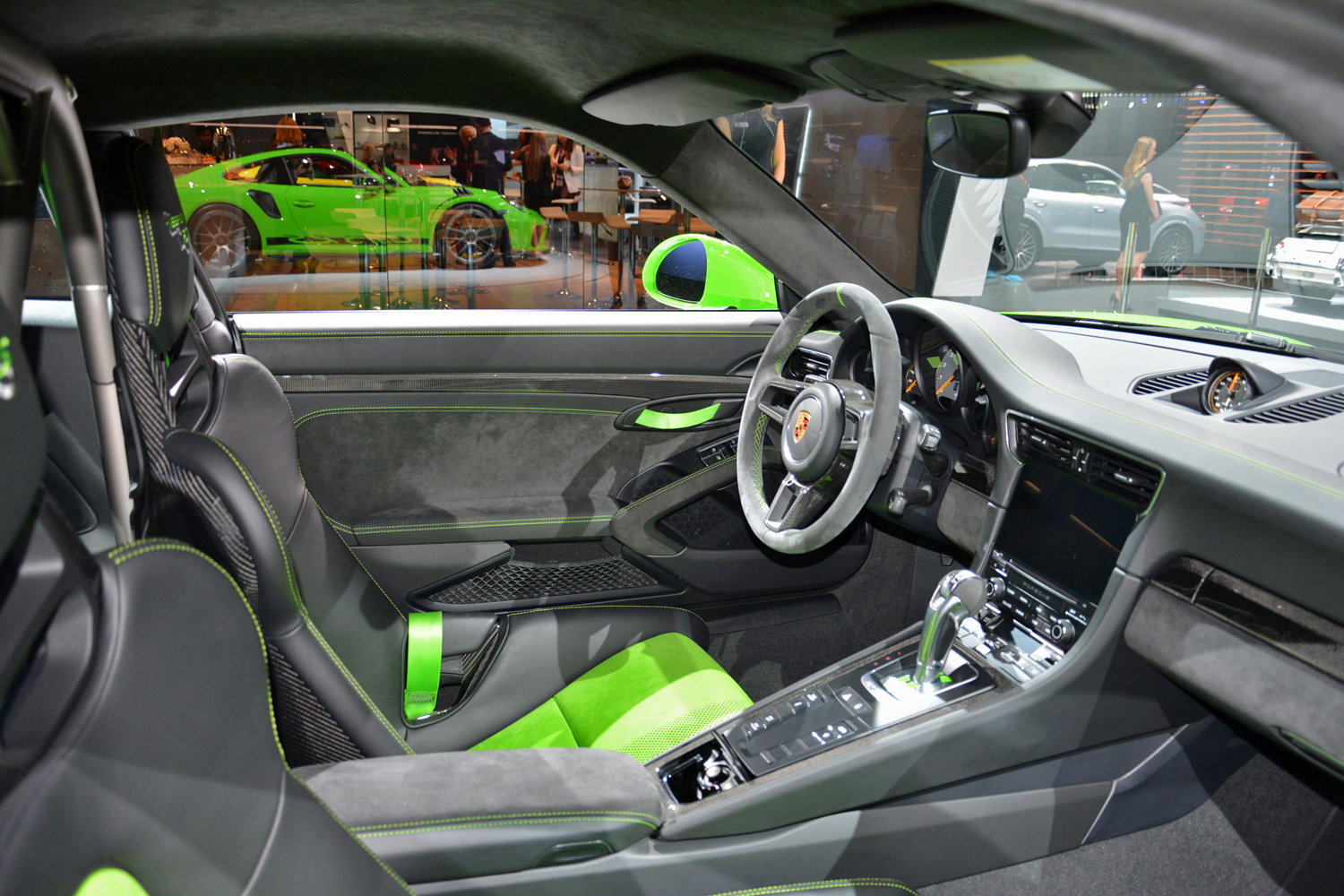Porsche is in the final stages of developing the next-generation 911. The current car (called 991 internally) has entered its last full calendar year on the market. It’s going out with a bang. An updated 911 GT3 RS with more power and trick tech features is Porsche’s punk rock cover of a swan song for the model. It also stands out as the first GT3 RS available with a track-oriented Weissach package.
The GT3 RS’ business end hides a 4.0-liter flat-six engine tuned to deliver 520 horsepower (20 more than the outgoing model) and 364 pound-feet of torque. It’s the most powerful naturally aspirated (read: turbo-less) engine Porsche has ever made for one of its street-legal cars. You can buy a Porsche with more power, but it will either be a turbocharged model or a hybrid. The flat-six pelts the GT3 RS from zero to 60 mph in three seconds flat and, given enough tarmac, sends it to a top speed of 193 mph.
Porsche applied the lessons it learned on the track to the 911 GT3 RS. Fully adjustable, the suspension system uses some of the most advanced components ever fitted to a road-legal Porsche. Rear-wheel steering boosts agility at higher speeds, while huge brakes on both axles bring the action to a stop with no fuss. The extra-wide rear tires help transfer the flat six’s cavalry to the pavement.
Mass is the enemy of performance. Porsche used lightweight materials like carbon fiber, magnesium, and polyurethane to shed as much weight as possible, bringing the RS under 3,200 pounds. Minor visual tweaks help the newest 911 stand out from its predecessor while generating more downforce, but you need to be a true Porsche-phile to spot them. Here’s a hint: look at the spoiler up front (it’s bigger than before).
The weight-saving treatment continues inside. Porsche made the side and rear glass thinner, added lightweight door panels with loops instead of conventional handles, tossed out some of the sound insulation, and sent the rear seats back to the parts bin. The two passengers travel on bucket seats with carbon fiber-reinforced back rests.
The list of options includes the Weissach Package (pictured above), which costs $18,000. Unveiled at the 2018 New York auto show, it adds front and rear sway bars, a roof panel, a steering wheel, and shift paddles all made out of carbon fiber to further reduce weight. Buyers can also add magnesium wheels, which Porsche priced at $13,000. Ordering both makes the GT3 RS 40 pounds lighter. Andreas Preuninger, the head of Porsche’s GT division, told Digital Trends the package makes a big difference on the track. The car feels lighter, more precise, and it’s ultimately more engaging to drive. Some of the technology comes from the sold-out 918 Spyder.
“[On the 918], the package consisted of visible carbon fiber parts. If you look at the car without Weissach, it’s relatively calm. We don’t show off the carbon fiber, though there is carbon fiber. With the Weissach package we really clearly show it off. It looks more brute, more racy, more track-focused. Apart from the looks, we transferred the 918 experience from the GT3 RS. Look at the wheels as well. The magnesium wheels were part of the 918 Weissach package. We found out it was an option you really could feel as a driver in terms of throttle response and turn-in,” Preuninger told us on the sidelines of the New York show.
The 2019 Porsche 911 GT3 RS is on sale now, though deliveries aren’t scheduled to start until the fall of 2018. Pricing starts at $187,500 before dealers factor in a mandatory $1,050 destination charge. The brand doesn’t expect many people will stick with the base model, though. Preuninger told us the take rate on the Weissach package among GT2 RS buyers stands at about 90 percent. He expects a similar percentage of buyers will tick the box when ordering a GT3 RS.

